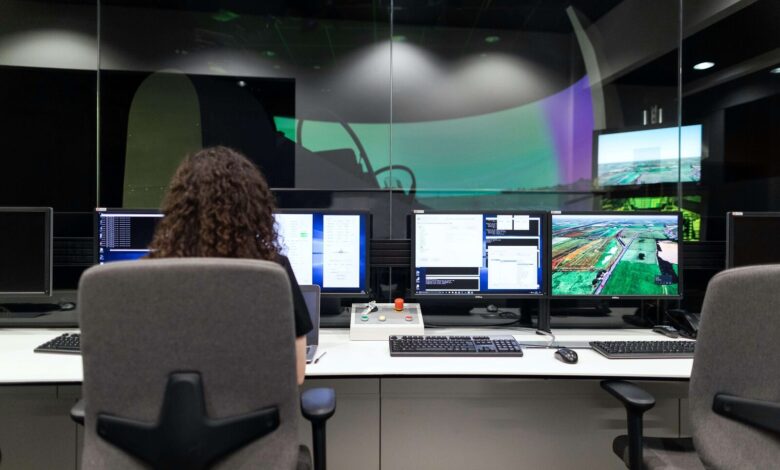
AI and automation are reshaping every facet of the technology industry, and software quality assurance (QA) is no exception. A recent forecast by Gartner reveals a dramatic surge in generative AI (GenAI) investment, predicting global spending to hit $644 billion in 2025, placing software QA at a crossroads. The potential for AI and automation to boost efficiency and accuracy has taken over headlines and internal memos. However, despite this widespread enthusiasm, a recent report highlights a substantial disconnect between the anticipated benefits of AI and its actual adoption among QA teams.
The recent annual Software Testing and Quality Report, which surveyed thousands of QA professionals globally, found AI-powered tools and automation technologies continued to be a dominant theme. However, the findings suggest that while automation adoption is rising, practical integration remains fragmented, with many organizations still navigating initial implementation stages.
Automation Aspirations vs. Reality
According to the report, 86% of organizations with strong automation practices and continuous integration/continuous delivery (CI/CD) pipelines report accelerated software release cycles. These organizations have successfully aligned their testing strategies to meet the expectations of rapid releases. However, this contrasts sharply with broader industry realities, where automation maturity varies dramatically, with many teams struggling to integrate automation consistently throughout their workflows.
One notable takeaway is that QA teams recognize the transformative potential of AI but face tangible barriers, such as siloed teams, legacy processes, and a persistent reliance on manual testing. The reality is that most organizations have automated fewer than half of their test suites, highlighting the significant room for automation-driven efficiency gains.
AI’s Role in Closing Staffing and Skill Gaps
The QA industry faces an ongoing challenge of skilled tech talent shortages. Rather than exacerbating these gaps, however, the report found that AI and automation tools are pivotal in alleviating staffing shortages. Additionally, AI-powered tools contribute positively to employee satisfaction and upskilling.
Teams that deploy automation extensively report greater professional satisfaction, primarily due to the reduction of repetitive tasks and the opportunity to engage in more strategic and creative QA activities. Additionally, automation proficiency has emerged as a key professional skill, supporting long-term career growth.
Teams that utilize automation effectively report fewer burnout and turnover issues. Automation offloads repetitive tasks, freeing QA personnel to focus on higher-value analytical activities. This shift has a positive impact on morale and contributes to employee retention, which is crucial during ongoing talent shortages.
Bridging Quality Assurance and Cybersecurity with AI
The concept of “shift-left,” embedding quality checks and security evaluations earlier in the software development lifecycle (SDLC), has grown more prominent, especially as cybersecurity threats rise. Major challenges remain in fully integrating cybersecurity testing with traditional QA practices.
While 39% of teams are embedding QA earlier in the SDLC, many still face hurdles in integrating new tools into existing workflows, indicating ongoing challenges in unifying security and QA processes. Often, security testing occurs in isolated silos, disconnected from regular QA processes. Bridging this gap with integrated tools and AI-driven testing methodologies can streamline vulnerability management and reduce time-to-resolution for security issues.
Despite these challenges, the study discussed how AI technologies facilitate rapid threat detection, vulnerability assessment, and proactive remediation, allowing QA teams to identify potential issues long before software reaches the deployment stage. Yet again, these capabilities are unevenly adopted across the industry, uncovering an opportunity for teams to further leverage AI-driven approaches.
AI, Data, and Enhanced Decision-Making
Another primary benefit of AI and automation identified in the report is improved decision-making capabilities. Automation tools that leverage AI-driven analytics provide QA teams with deeper insights into software performance, defect trends, and potential risk areas.
Such insights empower QA managers to make more informed decisions about resource allocation, prioritize testing activities based on business value, and better communicate QA outcomes to executive stakeholders. Consequently, QA teams can align their objectives more closely with strategic business goals, transforming QA from a cost center to a strategic asset.
Recommendations for Accelerating AI and Automation Adoption
Given these insights, organizations should focus on several actionable strategies:
- Prioritize integration over isolated implementations: Automation tools deliver the greatest value when fully integrated into existing CI/CD pipelines and team workflows.
- Invest in skills and training: Ensure QA teams are proficient in AI and automation tools through continuous training and education, maximizing technology adoption and ROI.
- Break down organizational silos: Encourage collaboration between development, QA, and operations teams, creating unified processes that better utilize automation.
- Adopt a strategic, incremental approach: Instead of automating everything immediately, focus first on repetitive, high-impact tests. Gradually expand automation coverage as teams build confidence and expertise.
- Enhance visibility and analytics: Deploy analytics-driven testing platforms that provide real-time insights into testing effectiveness and defect trends, enabling proactive quality management.
- Leverage AI for predictive insights: Use AI tools not just to execute tests but also to predict potential defects and vulnerabilities before they arise, enabling proactive rather than reactive QA practices.
The Future of QA with AI
AI and automation undoubtedly represent the future of software testing. However, bridging today’s fragmented adoption and tomorrow’s robust automation requires strategic investments in technology, processes, and, most importantly, people. Organizations embracing these strategies will enhance software quality and create resilient, skilled teams ready for future challenges. AI is poised to redefine software quality assurance fundamentally, but only if companies commit to methodically overcoming existing implementation hurdles and fully leveraging AI’s potential.





